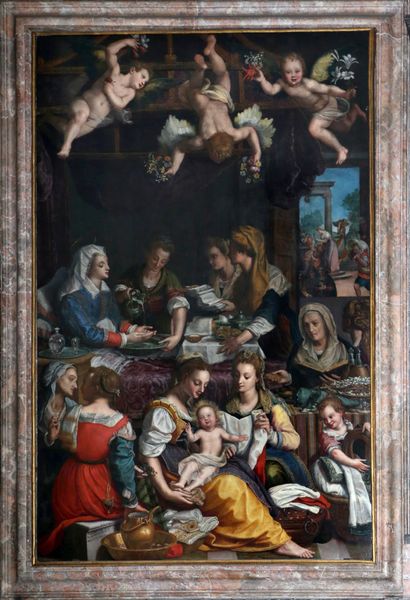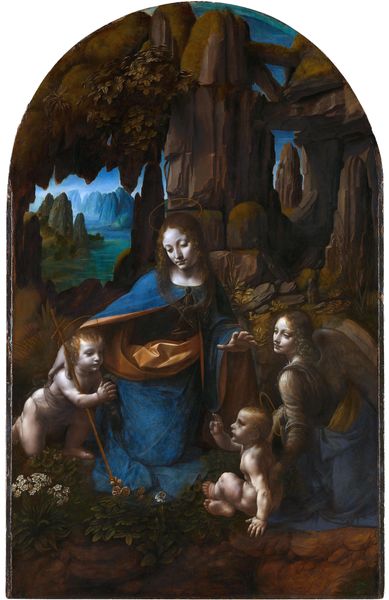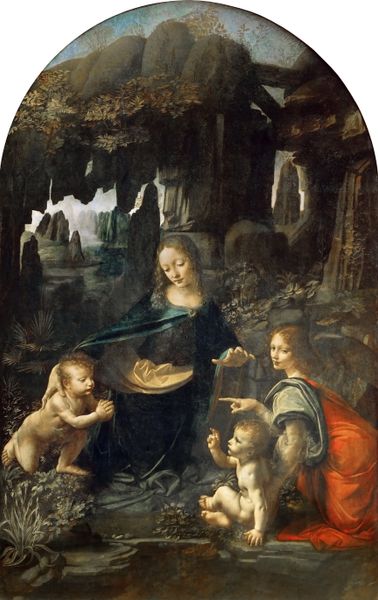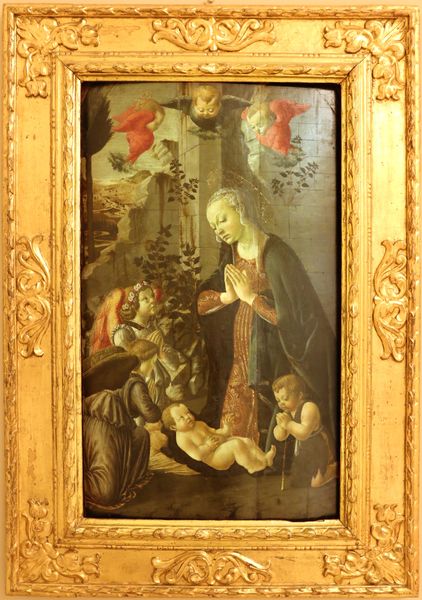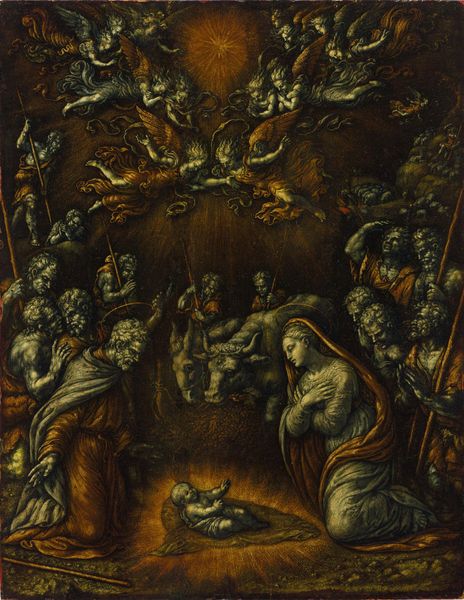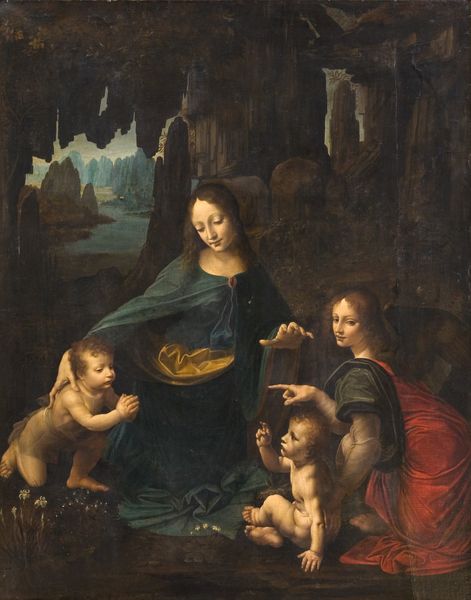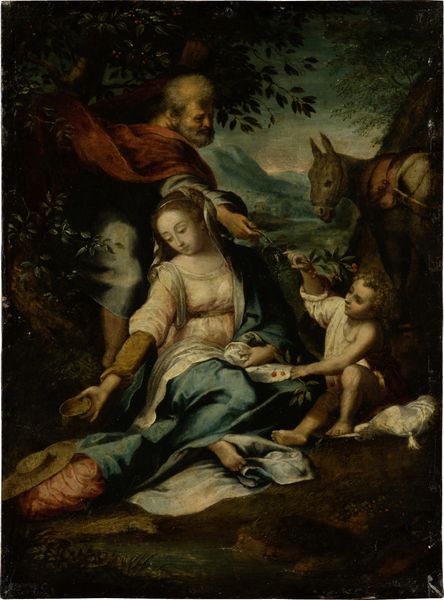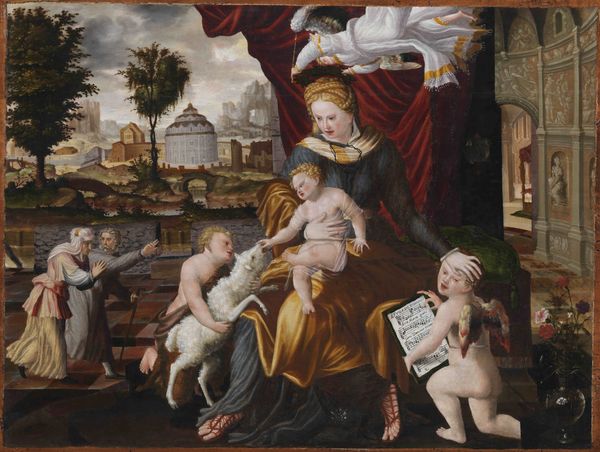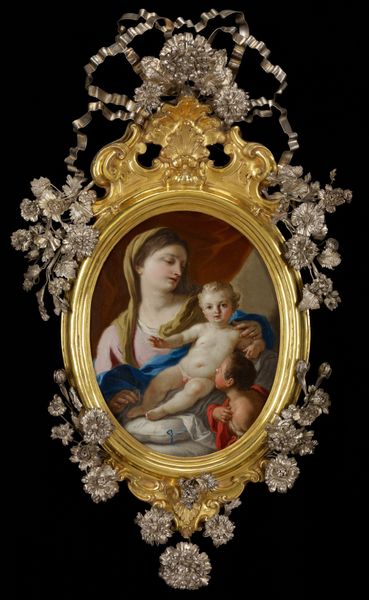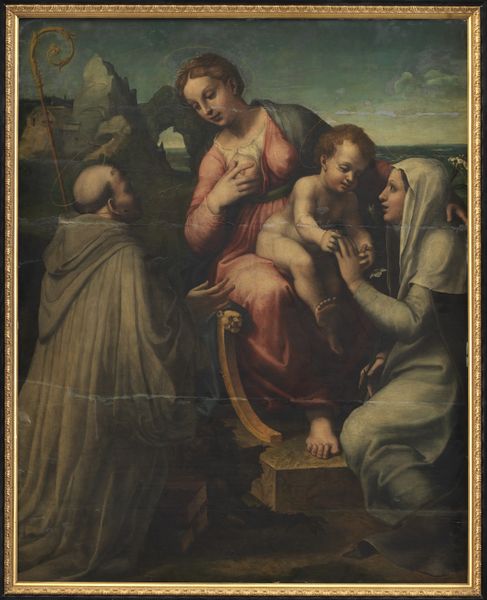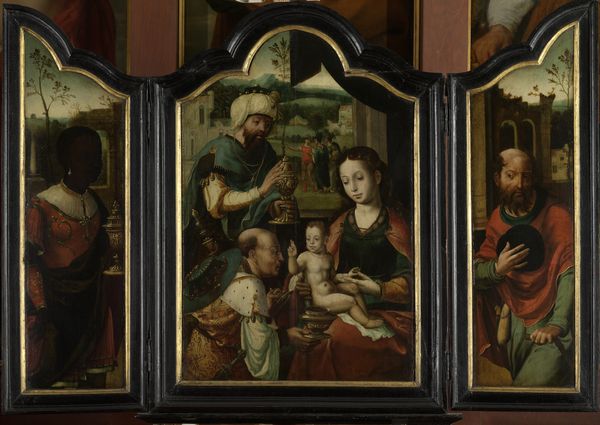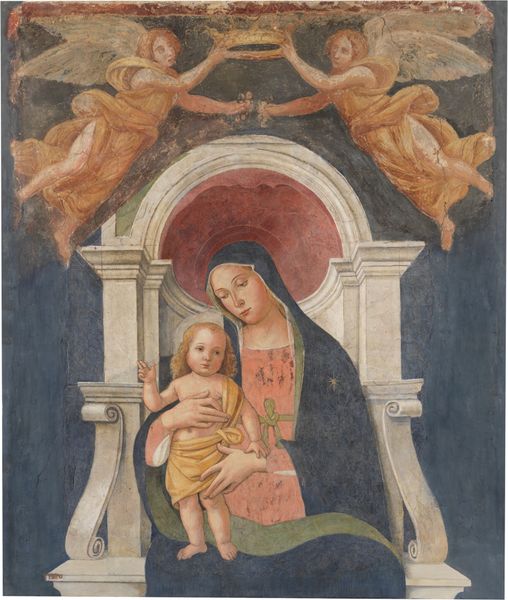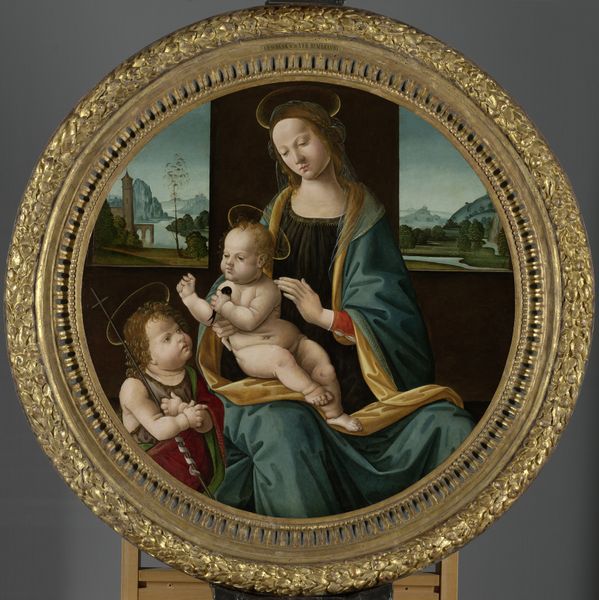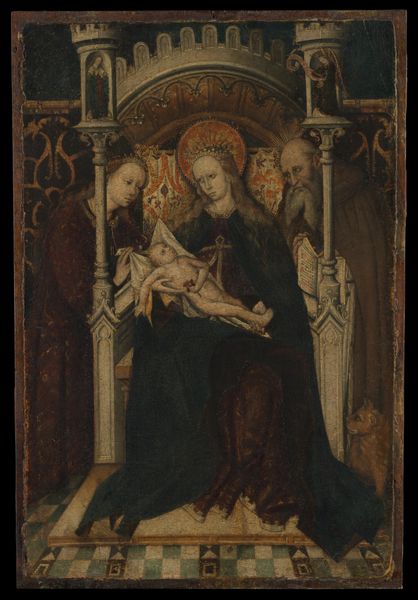
Reproductie van Leonardo da Vinci, Maagd op de rotsen, Louvre 1907 - 1935
0:00
0:00
painting, oil-paint
#
painting
#
oil-paint
#
landscape
#
figuration
#
history-painting
#
italian-renaissance
Dimensions: height 180 mm, width 240 mm
Copyright: Rijks Museum: Open Domain
Curator: Editor: Here we have a reproduction of Leonardo da Vinci’s "Virgin of the Rocks," Louvre version, rendered sometime between 1907 and 1935. Looking at it, I'm immediately struck by the rather heavy application of what seems to be oil paint, even in this reproduction. The darkness too. It feels less ethereal than I imagined. How do you read this work? Curator: Well, for starters, let’s consider the very nature of reproduction. This isn't just a copy, it's an object made in a different time, with its own production methods and intentions. The original Renaissance painting, of course, involved specific pigments and laborious processes available at that time, with skilled labor. But a 20th-century reproduction speaks to a different economy. Mass production, perhaps? Think about how the availability of paint and the skill level required shifted drastically. Does it still hold the aura of the original? Editor: That's interesting! It makes you wonder who was making these reproductions and why. Were they trying to make art accessible, or was there more of a commercial aim? Did they change the materials depending on cost? Curator: Precisely. The 'why' and 'how' are inextricably linked. The original was commissioned; what fuelled the reproduction? Was it to disseminate knowledge, generate revenue, or something else entirely? The landscape tradition depicted here, using paint in such a thick manner – what kind of aesthetic choices and markets were dictating those applications? Editor: I hadn't considered how much the process of making a copy could reveal about a specific period. So it shows that what appears like a simple reproduction can open doors into complex questions concerning art production, material, labor, and historical consumption. Thanks, it's been very illuminating! Curator: Indeed. Each brushstroke, each material choice tells a story beyond the surface. Always look for the labor in art.
Comments
No comments
Be the first to comment and join the conversation on the ultimate creative platform.
